You can future-proof your gaming laptop on a tight budget by prioritizing a powerful GPU like the RTX 4060 with 12GB+ VRAM over premium features that don’t enhance gaming. Target at least 6-core CPUs, 16GB upgradeable RAM, and 1TB NVMe storage. Choose 144Hz displays with IPS technology for smooth gameplay without premium costs. Invest in robust cooling systems and metal chassis to protect your investment long-term. These strategic choices will maximize your gaming performance and longevity without breaking the bank.
Prioritize GPU Power Over Premium Features for Long-Term Gaming Performance
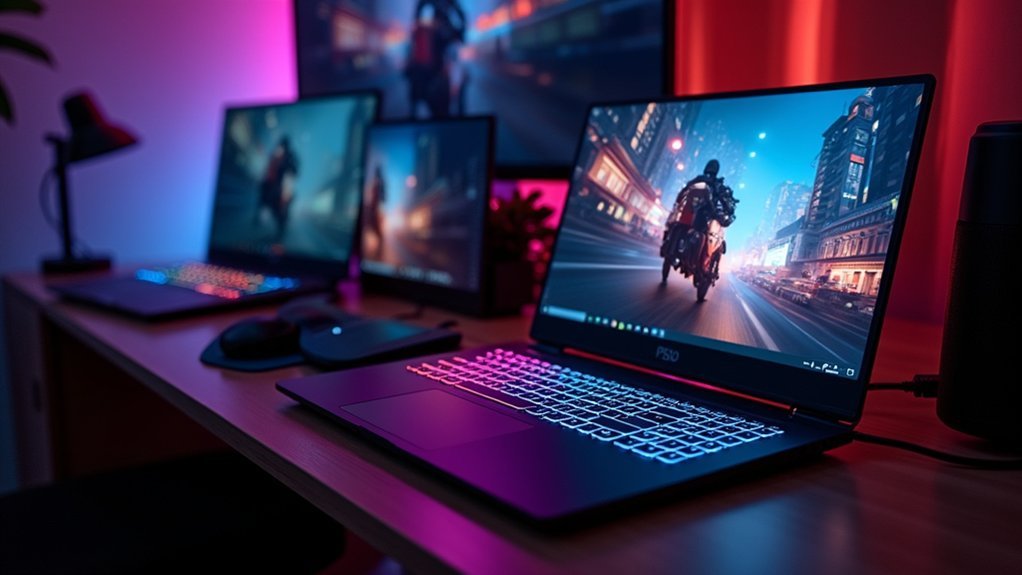
When building a gaming laptop that’ll serve you well for years to come, you should invest the bulk of your budget in a powerful GPU rather than flashy premium features that won’t impact your frame rates.
Prioritize at least an RTX 4060 for solid mid-range performance, or stretch for an RTX 4070/4080 if possible. These graphics cards deliver significant performance boosts and better longevity than premium displays or maxed-out CPUs.
For lasting gaming performance, target RTX 4060 as your baseline or upgrade to RTX 4070/4080 for superior longevity over other premium components.
Focus on models with 12GB+ VRAM and DLSS support for future-proofing against demanding titles.
While features like exceptional battery life and premium build quality seem appealing, they won’t enhance your gaming experience like GPU power will.
Strong thermal solutions matter too, preventing overheating during extended gaming laptop sessions.
Balance CPU Performance With Budget Constraints for Future Game Requirements
While a powerful GPU forms the foundation of your gaming laptop’s performance, you’ll need to carefully select a CPU that complements your graphics card without draining your budget.
When buying a gaming laptop, target processors with at least 6 cores and 4.0 GHz boost speeds to guarantee a good gaming experience for years ahead. The Intel Core i7-14700HX and AMD Ryzen 9 7945HX represent excellent high-performance choices, while mid-range options like the Core i5-13400H or AMD Ryzen 7 7735HS deliver solid performance at lower price points.
Always prioritize the latest generation processors for better architectural improvements and performance per dollar. Future proof your investment by leveraging sales to secure slightly better CPUs that’ll remain viable for 3-5 years.
Maximize RAM and Storage Value While Planning for Future Upgrades
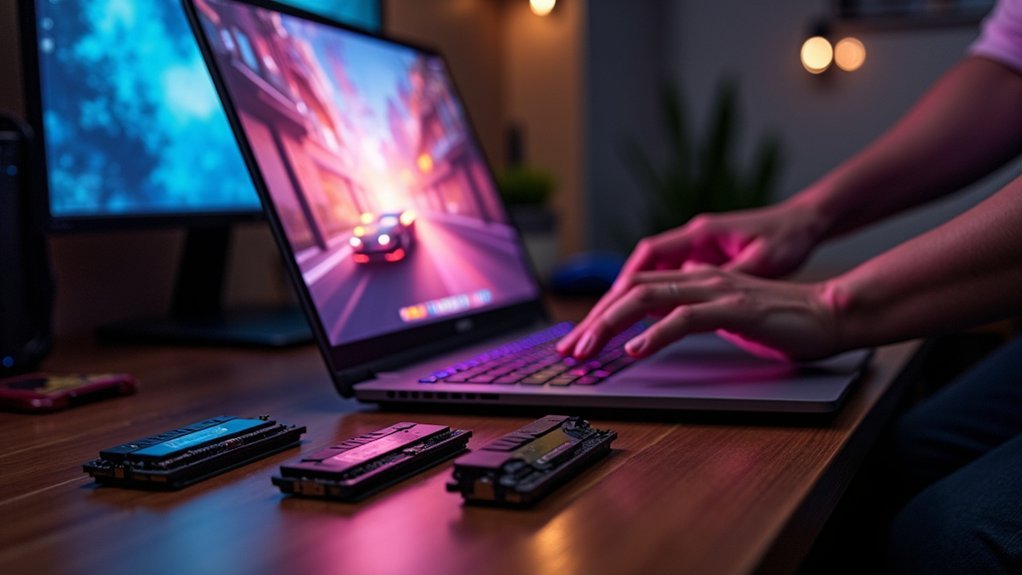
Since modern AAA games routinely consume 100GB or more of storage space and demand increasingly larger amounts of system memory, you’ll need to strategically approach your laptop’s RAM and storage configuration to avoid costly upgrades down the line.
To maximize ram value, target 16GB minimum with 32GB ideal for future-proofing. Prioritize upgradable RAM slots over fixed memory configurations, allowing cost-effective expansion later.
Choose 16GB RAM minimum, 32GB for future-proofing, and prioritize upgradable slots over fixed memory for cost-effective expansion flexibility.
For storage value, choose laptops with 1TB NVMe SSD capacity and additional M.2 slots for future upgrades. Verify your gaming laptop supports DDR4 or DDR5 standards for peak performance.
This approach lets you start with adequate specifications while maintaining upgrade flexibility, preventing the need for complete system replacement as game requirements evolve.
Select Display Quality That Enhances Gaming Without Breaking the Bank
Having secured adequate RAM and storage capacity, your gaming laptop’s display becomes the primary interface between you and your gaming experience.
When shopping for a new gaming laptop, prioritize a 144Hz refresh rate to guarantee smooth gameplay during fast-paced action sequences. For 14-15 inch screens, 1080p resolution delivers excellent performance without the premium cost of higher resolutions.
Skip budget TN panels and invest in IPS technology for superior color accuracy and viewing angles. This upgrade notably improves display quality when you play games across different genres.
Look for screens offering at least 300 nits brightness for comfortable gaming in various lighting conditions.
The best gaming laptop for your budget should include G-Sync or FreeSync support, eliminating screen tearing without considerably increasing costs.
Evaluate Cooling and Build Quality to Protect Your Investment Over Time
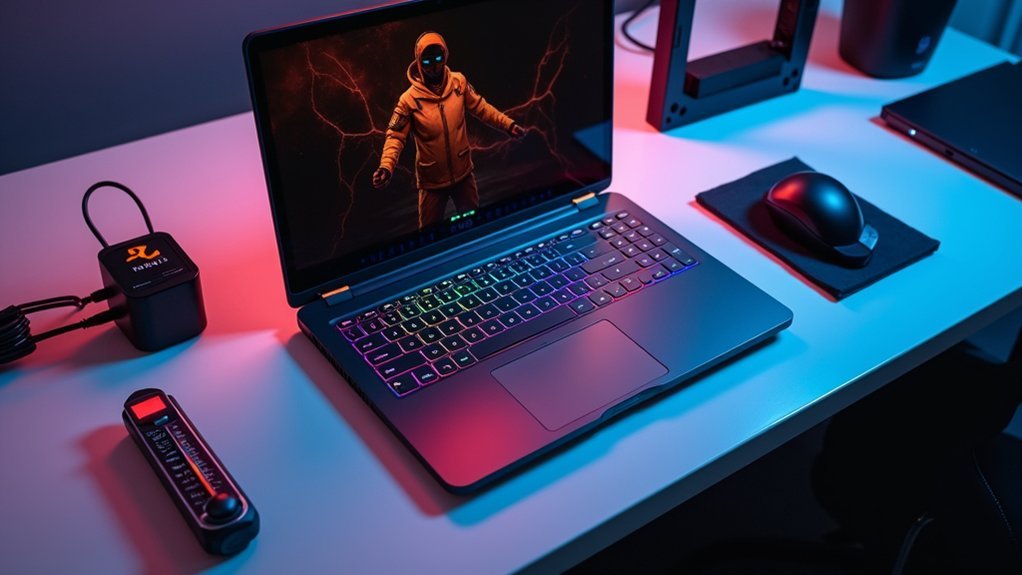
Because thermal management directly impacts your laptop’s performance and lifespan, you’ll want to prioritize models featuring vapor chamber cooling over standard heat pipe designs.
These advanced cooling systems prevent overheating that can damage your CPU and GPU, protecting your investment long-term.
Build quality matters equally. Choose gaming laptops with metal chassis over plastic construction—they’ll withstand drops and daily wear better.
Look for models with multiple fan configurations and customizable fan speeds to prevent thermal throttling during intense sessions.
Poor cooling solutions can drastically shorten component lifespans, making robust thermal designs essential.
Research well-reviewed models known for durability before purchasing.
While premium cooling and build quality might cost more upfront, they’ll save money by extending your laptop’s usable life and maintaining consistent performance.
Frequently Asked Questions
How to Future Proof Your Gaming Laptop?
You’ll future-proof your gaming laptop by choosing a 6-core CPU, GPU with 8GB VRAM, 32GB RAM, 1TB NVMe SSD, and 144Hz display with G-Sync or FreeSync support.
How to Prolong the Life of a Gaming Laptop?
Keep your laptop clean by regularly removing dust from vents and fans. Manage temperatures with cooling pads, avoid overcharging the battery, update drivers frequently, and don’t run unnecessary background programs.
Why Do Gaming Laptops Deteriorate so Fast?
Gaming laptops deteriorate fast because you’re dealing with rapid hardware advancement, limited upgrade options, soldered components, heat management issues, and increasing game demands that quickly outpace your laptop’s capabilities.
How to Optimize Your Gaming Laptop for Gaming?
Update your drivers regularly, close unnecessary background programs, adjust in-game settings for ideal performance, clean dust from vents monthly, use cooling pads, and make certain you’re running games from your SSD.
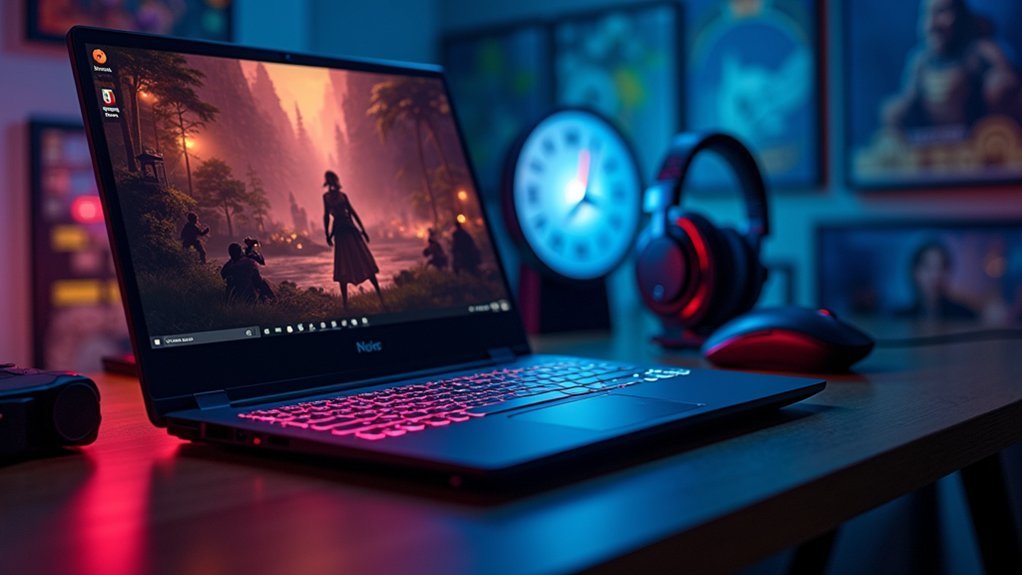
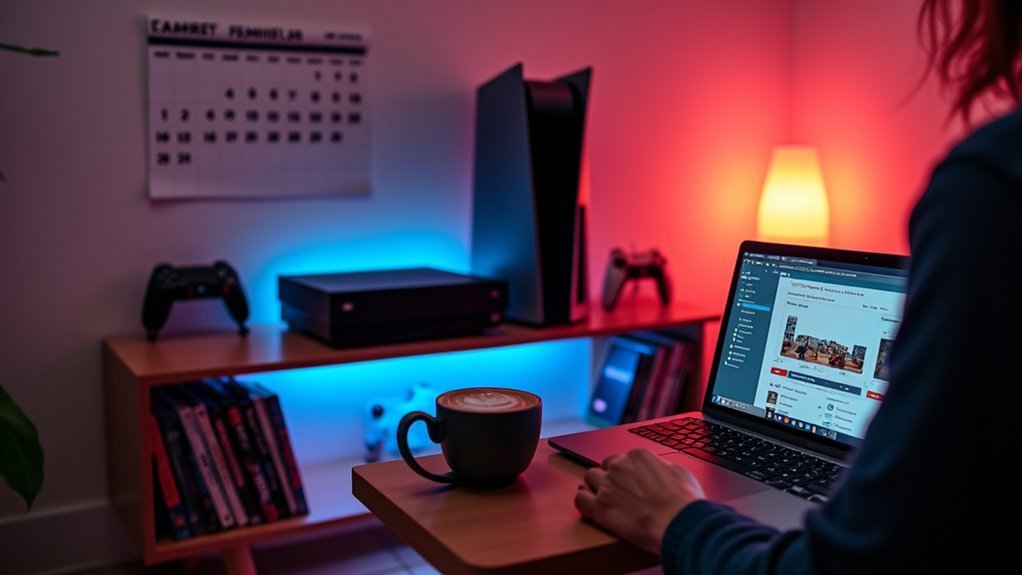


Leave a Reply